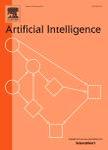版权所有:内蒙古大学图书馆 技术提供:维普资讯• 智图
内蒙古自治区呼和浩特市赛罕区大学西街235号 邮编: 010021

作者机构:Univ Basque Country Dept Comp Sci & Artificial Intelligence E-20080 San Sebastian Basque Country Spain
出 版 物:《ARTIFICIAL INTELLIGENCE》 (人工智能)
年 卷 期:2000年第123卷第1-2期
页 面:157-184页
核心收录:
学科分类:08[工学] 0812[工学-计算机科学与技术(可授工学、理学学位)]
基 金:Comisión Interministerial de Ciencia y Tecnología, CICYT, (TIC97-1135-C04-03) Dirección General de Universidades e Investigación
主 题:machine learning supervised learning Feature Subset Selection wrapper predictive accuracy Estimation of Distribution Algorithm Estimation of Bayesian Network Algorithm Bayesian network overfitting
摘 要:A new method for Feature Subset Selection in machine learning, FSS-EBNA (Feature Subset Selection by Estimation of Bayesian Network Algorithm), is presented. FSS-EBNA is an evolutionary, population-based, randomized search algorithm, and it can be executed when domain knowledge is not available. A wrapper approach, over Naive-Bayes and ID3 learning algorithms, is used to evaluate the goodness of each visited solution. FSS-EBNA, based on the EDA (Estimation of Distribution Algorithm) paradigm, avoids the use of crossover and mutation operators to evolve the populations, in contrast to Genetic Algorithms. In absence of these operators, the evolution is guaranteed by the factorization of the probability distribution of the best solutions found in a generation of the search. This factorization is carried out by means of Bayesian networks. Promising results are achieved in a variety of tasks where domain knowledge is not available. The paper explains the main ideas of Feature Subset Selection, Estimation of Distribution Algorithm and Bayesian networks, presenting related work about each concept. A study about the overfitting problem in the Feature Subset Selection process is carried out, obtaining a basis to define the stopping criteria of the new algorithm. (C) 2000 Elsevier Science B.V. All rights reserved.